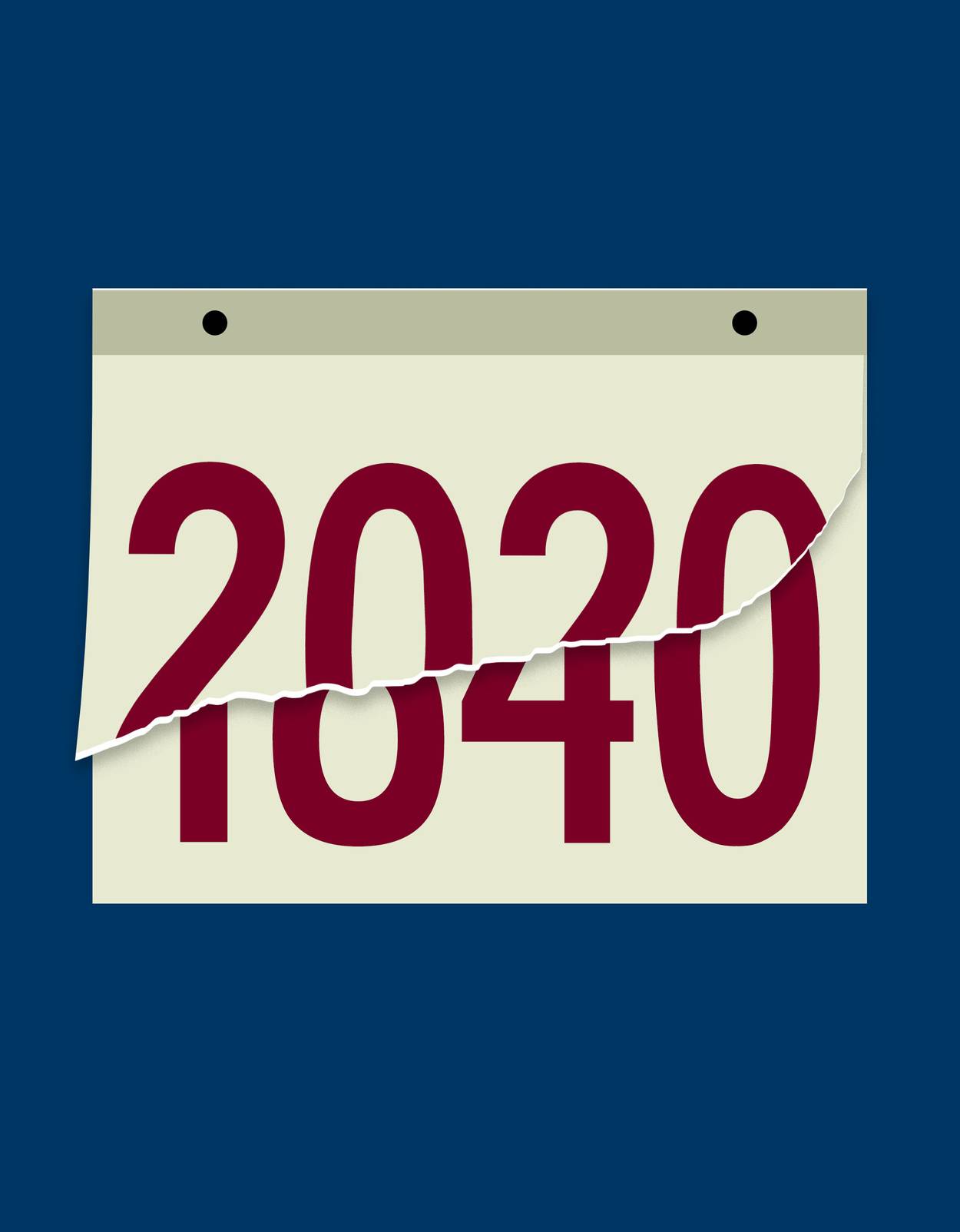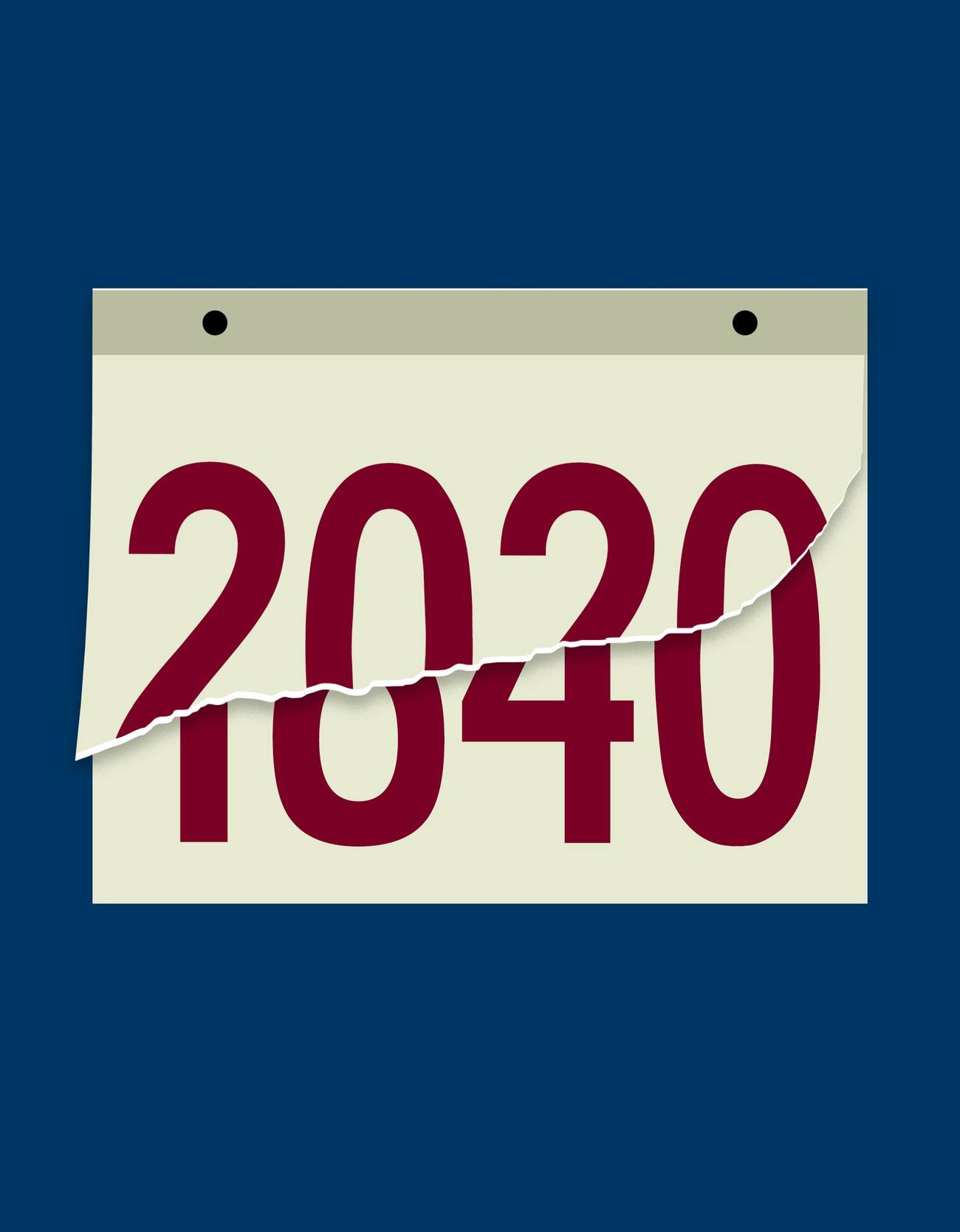Want to Understand 2020? Look at 1840.
How one seminal moment in Jewish mystical life provides profound insight into our present moment




December is now upon us, time for end-of-year summations, but good luck getting really excited about 2021: Out there, in the plague-ridden world, it’s still 2020, this strangest of all years any of us had ever lived through.
How to understand the strange confluence of events that is making this annus particularly horribilis? Unsurprisingly, a whole cottage industry of historical analogies has sprung up overnight, with some pontificators saying 2020 is a lot like 1918, the year of the Spanish flu, and others saying our moment is more reminiscent of the 1930s, the decade of gleeful descent toward fascism and unreason.
We Jews in particular are conditioned to play these sort of games. We have a whole holiday dedicated to it: Tisha B’Av, the catchall day for various historical catastrophes, each strangely occurring on the exact same date and reminding us that history sometimes has a nasty way of repeating itself. And so, let us indulge: What is 2020 really like?
Allow me an unorthodox contribution: 2020 is a lot like 1840.
In case you’re not familiar with that particular moment in the 19th century, consider The New York Times’ review of a book published last year, The Europeans: Three Lives and the Making of a Cosmopolitan Culture by Orlando Figes. Here’s how the review begins, with the world of 1840 in medias res:
Imagine a society where, within the space of a single generation, human innovation all but collapses the most formidable geographic distances, allowing individuals and information to travel the globe with unprecedented swiftness and ease. Where new platforms radically transform the ways in which news, music, books and art are created and consumed. Where media-driven celebrity trumps older modes of authority and forms new elites, endowing famous artists and performers with peerless cachet. Where audiences converge in a worldwide culture of “sharing,” and diversity and connectedness join equality and freedom as the shibboleths of Western liberalism. Where, at the same time, legislation struggles to keep pace with technological change; capitalism and consumerism destroy even as they enrich; and nationalism, racism and xenophobia poison the public discourse, threatening disaster.
I thought about this passage a lot during the early days of COVID-19, watching Jimmy Fallon broadcast live from his home and marveling that he and I basically used the same technologies and enjoyed the same production values. This change, I thought, wasn’t just about the ways in which technology erased many of our existing inequalities and barriers. It was about making us rethink our entire approach toward knowledge itself. How do we know what we know isn’t a question we ask every day or every year; when we bother to stop and contemplate it, miraculous things happen.
I mean that literally: An obscure passage in the Zohar, the seminal work of Jewish mysticism, states that during the sixth century of the sixth millennia of the Jewish calendar the gates of wisdom will be opened. Naturally, the prediction sparked a debate within the Jewish community about how this should be interpreted, with some optimistic about the promised revolution in knowledge and others skittish.
This debate, slow brewing for years, bubbled up in the Jewish calendar year 5600, or, as it is better known, 1840. Rabbi Jacob Lifschutz, the famed handler of the central Jewish leader at the time, Rabbi Yitchak Elchanon Spektor, was skeptical. He wrote:
Starting in the year 5600, the vision of the holy Zohar—that at that date the gates of wisdom would be open …—was realized. The construction of railroads and steamships proliferated from that epoch, along with the invention of matches, the telegraph, gaslights, and electricity, and later the telephone and phonographs, as well as many other inventions in every branch of technology and scientific disciplines … In our country, too, which was then in a wild state the government began to pave the first highway from Petersburg to Warsaw in the year 5600. Many associated this with a biblical verse: “Build up, build up the highway” (Isaiah 62:10).
All this building didn’t particularly make Lifschutz happy. As one scholar recounts, the rabbi associated the year 1840 with “the heightening of the crisis of modernity,” and longed instead for simpler, older times when the best minds of the generation had to worry about nothing more than the sacred and eternal duty of studying Torah. Other rabbis, it’ll come as no surprise, felt differently: David Einhorn, for example, an early Reform rabbi, was excited about modernity’s leaps, and believed that the new technologies and ideas would help rescue Jews from the backwardness of their sheltered shtiebel lives. At a rabbinic conference, he even went as far as suggesting transforming Tisha B’Av from a day of sadness into a day celebrating Jewish dispersal throughout the world.
And so, the Jews quibbled. But not all of them, and not always: A surge in anti-Semitism, bolstered by the famous blood libel known as the Damascus affair, brought unexpected coalitions of Jews together. And some Jewish mystics took advantage of the anxiety everywhere in the air and leaned into the difficult moment to produce profound and stirring ideas that still inspire us today. Rabbi Mordechai Yosef Leiner, for example, started his Hasidic court, the Hasidut of Izhbitz, in 1840, seeing the moment of turmoil and upheaval as a joyous rapture in which “the words of Torah can become more accessible and attainable to the minds of mankind.”
Izhbitz modeled a rare fusion of modern sensibilities with traditional Hasidic sensitivities, meeting the uncertainties brought about by the year’s technological, political, and economic changes with optimism and resilience. Where others saw a period where traditional religion was simply obsolete and others just saw anxiety over its demise, Rabbi Leiner and others saw opportunity: Previous generations, they argued, were pressed by physical hardships to think of little more than survival. Now that technology has freed so much of our time and our space, it was time to reconsider the essential questions of humanity.
Which brings us back to 2020. Amid all the tragedy and death of the pandemic, there were also some remarkable opportunities uncovered. Communities learned how to celebrate, mourn, and study together in ways previously unseen. Buried underneath the medical crisis was also a reiteration of the crisis of modernity. What does it mean to be essential? Without a normal economy, people began to ask themselves how to construct meaning in a world where typical work environments—the great distraction of the modern era—were suddenly closed. Yuval Harari, in his book 21 Lessons for the 21st Century, muses:
As robots and AI push humans out of the job market, the ultra-Orthodox may come to be seen as the model of the future rather than as a fossil of the past. Not that everyone will become Orthodox Jews and go to yeshivas to study Talmud. But in the lives of all people, the quest for meaning and for community might eclipse the quest for a job.
Within a matter of days, 2020 forced us all to at least imagine where we would turn for such a quest.
And so, now that it’s almost New Year’s Eve and our minds are still set on renewal, let us remember one last teaching as we prepare for the final leg of this terrible, horrible, no good, very bad year. The Talmud, in Tractate Megilah 31b, says that we read the curses at the end of the Torah right before Rosh Hashanah as a reminder that “the year should end along with its curses and a new year should begin with all of its blessings.” This year, 2020, certainly feels like an apt year for such a prayer. But 1840 is a reminder that blessings don’t emerge in a vacuum—they arise not in spite of generational challenges but because of the challenges that each year faces. So in that sense, 2020 should end along with its curses and propel us to see the blessings and opportunities that 2021 brings our way.
Dovid Bashevkin is the Director of Education at NCSY and author of Sin·a·gogue: Sin and Failure in Jewish Thought. He is the founder of 18Forty, a media site exploring big Jewish questions. His Twitter feed is @DBashIdeas.